Remember the days of making macaroni necklaces at school to present to your mom for Mother’s Day? Coloured pasta is just as fun now as it was back then! Once you learn how to dye noodles, you can use them for sensory play or a variety of other activities with kids. 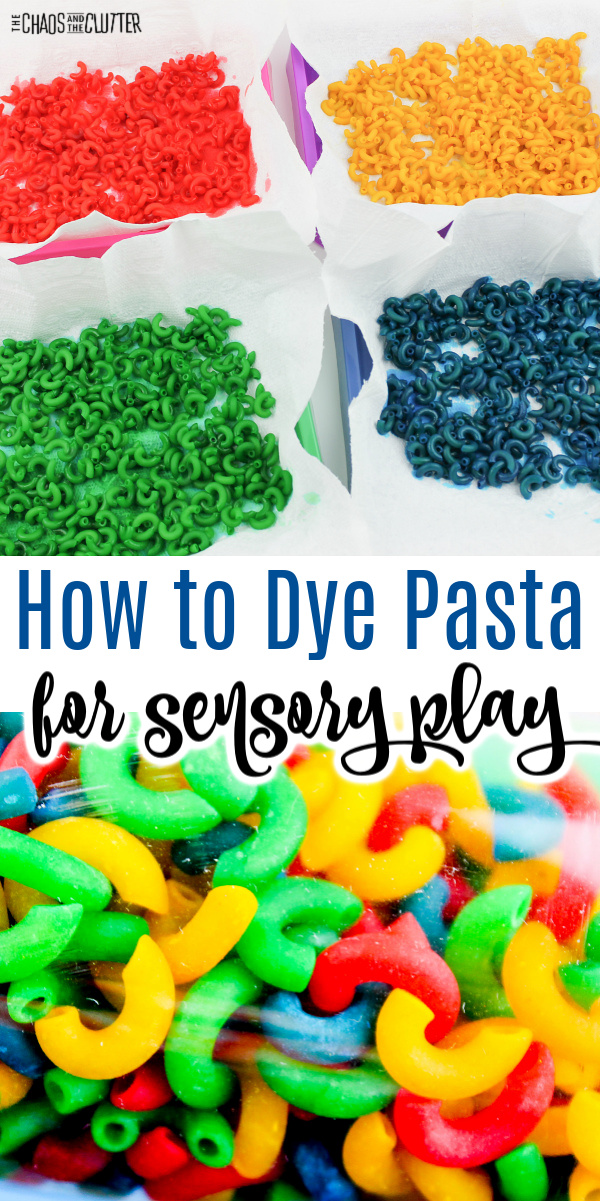 In our house, we do a lot of sensory play. I keep a variety of materials on hand for this including dyed noodles and dyed rice. Read our instructions on how to dye rice.
In our house, we do a lot of sensory play. I keep a variety of materials on hand for this including dyed noodles and dyed rice. Read our instructions on how to dye rice.
How to Dye Noodles:
Supplies needed:
- macaroni noodles (or other small noodle)
- food colouring*
- rubbing alcohol or white vinegar
- plastic resealable sandwich bags (you’ll need one for each colour that you want to make
- paper towel lined baking tray
*A note about the food colouring: You can use regular food colouring or for more vibrant colours, you can use Wilton food gel.
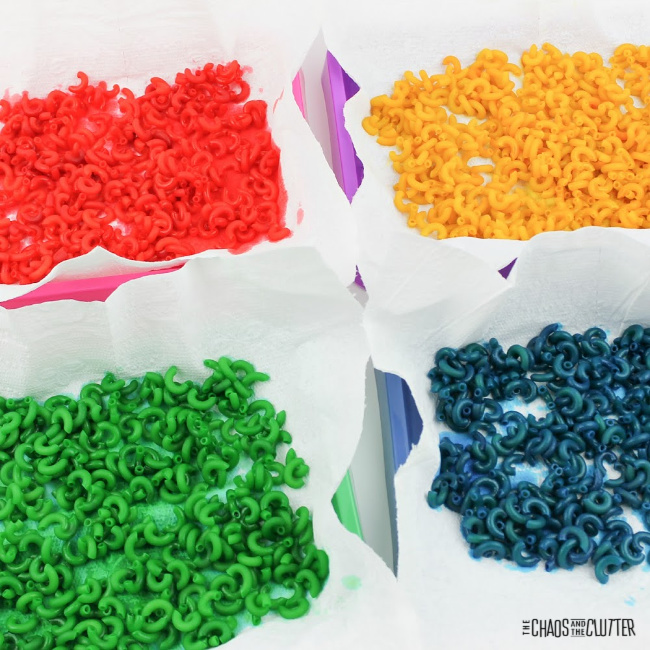 Directions:
Directions:
- Add 1 cup of dry noodles to each zipper bag. Do not seal the bags yet.
- Pour 1 Tbsp. rubbing alcohol or 2 tsp. vinegar into each bag.
- Into each bag, drop 10-20 drops of one colour of food colouring.
- Seal the bag well.
- Mix the noodles around in the bag by moving with your hands and shaking gently until they are is evenly coloured.
- Open the bags and pour each colour of macaroni (or other noodle shape) onto a tray to dry.
- Check on the macaroni noodles during the drying process and stir around to ensure the noodles are drying properly. It can take several hours for them to dry. I usually leave mine overnight to be sure.
- The coloured noodles are now ready to be used in sensory play.
- When not in use, store your dyed pasta in an airtight container or sealed bag.
 You can now use your brightly coloured noodles for art activities, preschool crafts, stringing onto yarn to make a necklace, or all kinds of sensory play. Dyed noodles make a great sensory bin filler or can be used in sensory bags or sensory bottles. You can make a simple sensory bottle by filling an empty bottle with coloured noodles or you can make an I-Spy type bottle by “hiding” other items in among the noodles for kids to find.
You can now use your brightly coloured noodles for art activities, preschool crafts, stringing onto yarn to make a necklace, or all kinds of sensory play. Dyed noodles make a great sensory bin filler or can be used in sensory bags or sensory bottles. You can make a simple sensory bottle by filling an empty bottle with coloured noodles or you can make an I-Spy type bottle by “hiding” other items in among the noodles for kids to find.
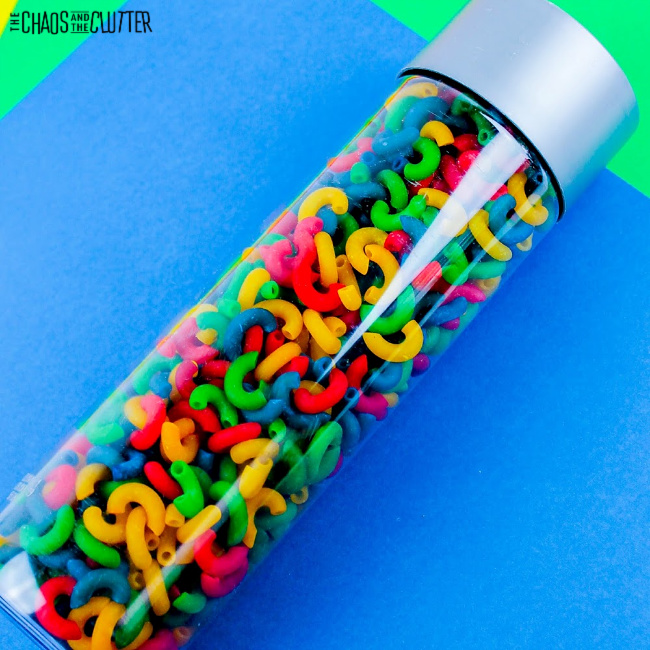 This method can be used to dye pasta of any shape. For larger noodles, you may find that you need slightly more food colouring. I find that you get the best colour results from using small pastas such as orzo, mini shells, Alphabet noodles, and macaroni.
This method can be used to dye pasta of any shape. For larger noodles, you may find that you need slightly more food colouring. I find that you get the best colour results from using small pastas such as orzo, mini shells, Alphabet noodles, and macaroni.
Some schools don’t allow food to be used in classrooms for play. If that’s the case, we also have a list of non-food sensory bin fillers.
Looking for other sensory play recipes to create fun options for your kids? Join us for a free five day email series on Sensory Activities and Solutions and get a free sample of our Sensory Play Recipes eBook.
You may also want to read:
How to Dye Rice for Sensory Play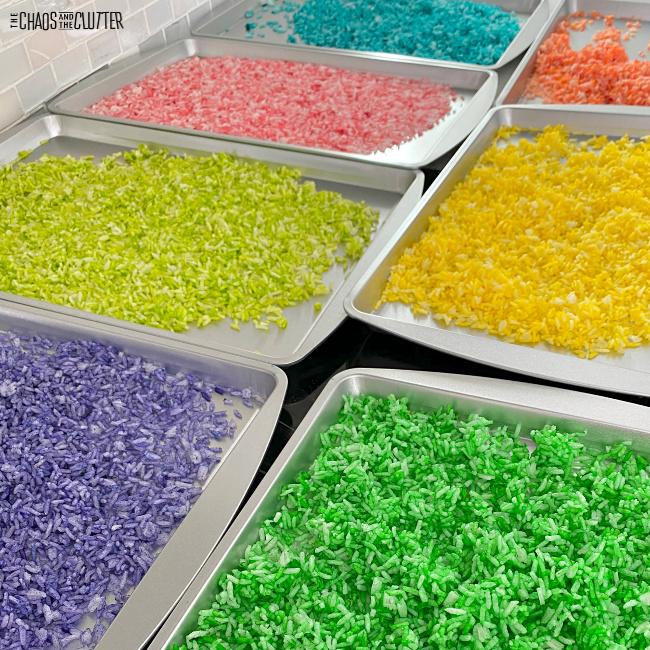
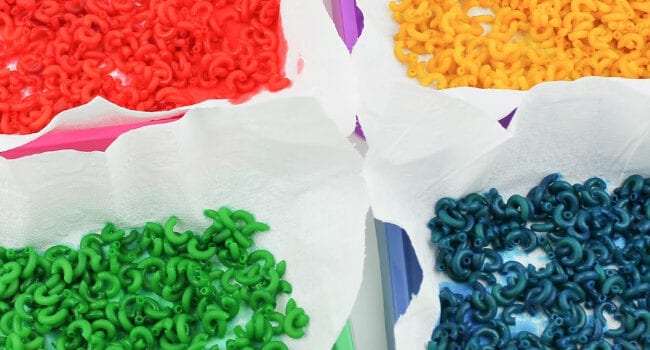
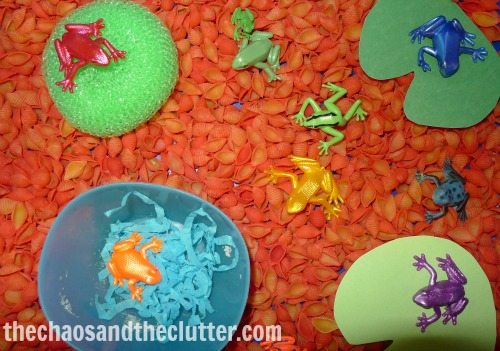


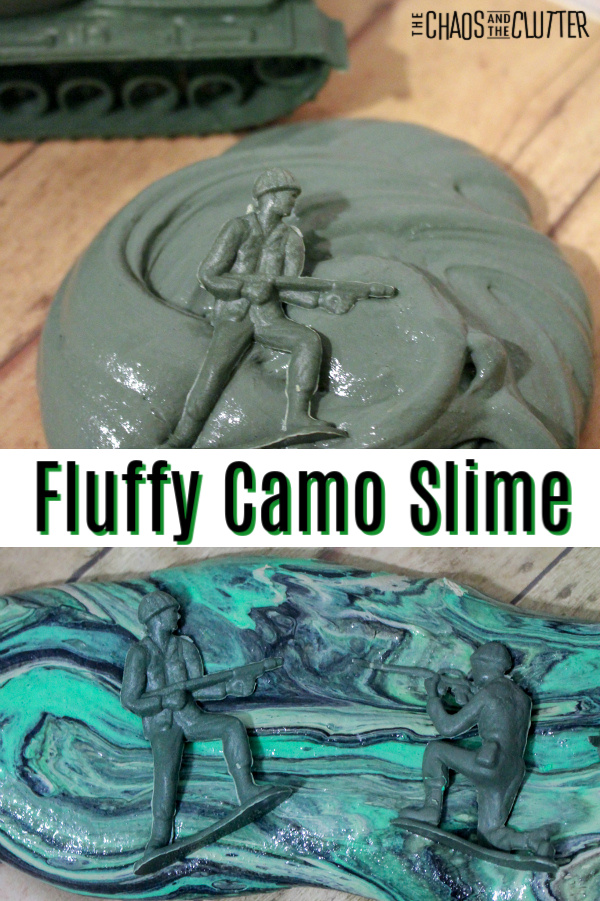 There are so many fun play options with this camo fluffy slime recipe. It also makes a great party favour for birthday parties too. When my middle son was younger, he had an army theme birthday party and I wish I’d had this recipe back then.
There are so many fun play options with this camo fluffy slime recipe. It also makes a great party favour for birthday parties too. When my middle son was younger, he had an army theme birthday party and I wish I’d had this recipe back then.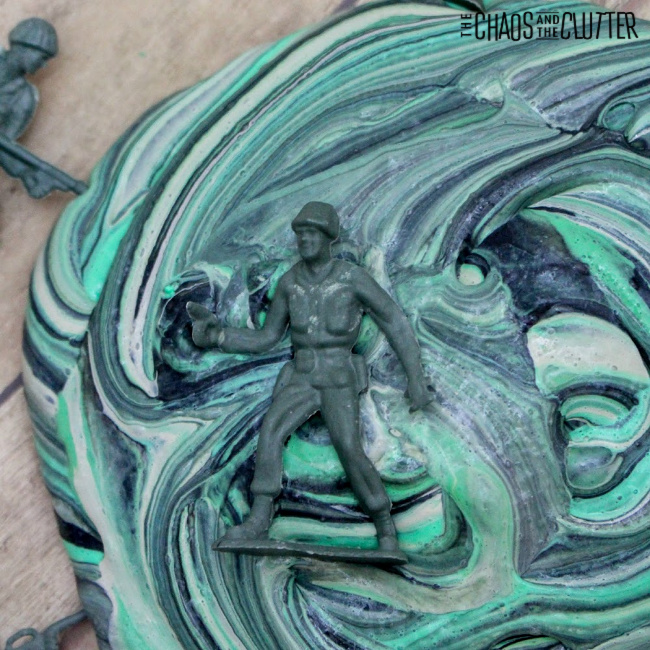
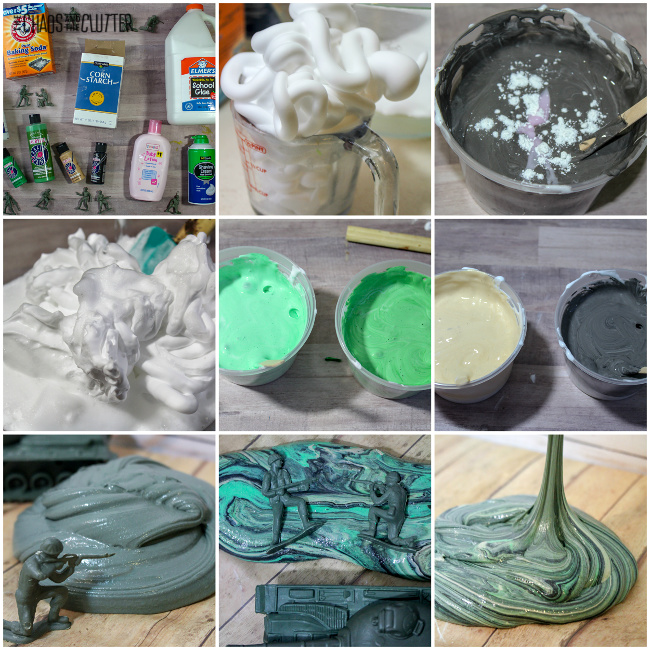 At first, the slime will have that marbled camouflage look but of course, eventually with play, the colours will combine. When this happens, your slime should turn an army green which is also a lot of fun.
At first, the slime will have that marbled camouflage look but of course, eventually with play, the colours will combine. When this happens, your slime should turn an army green which is also a lot of fun.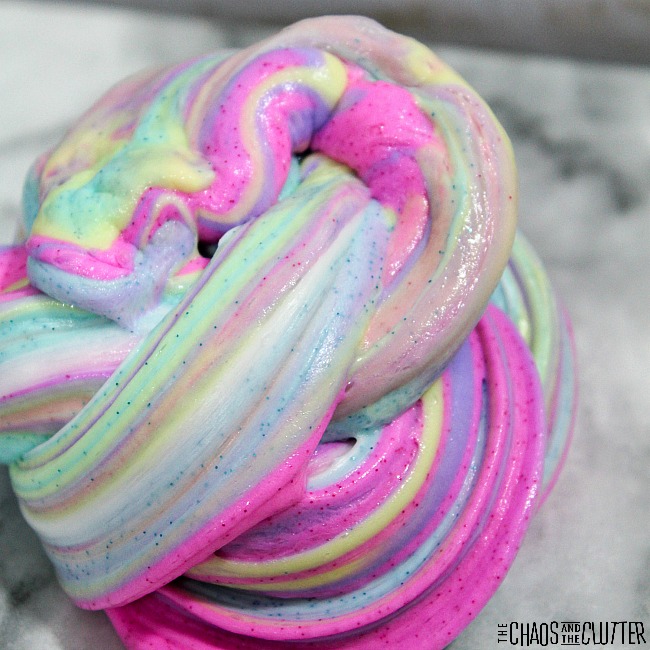
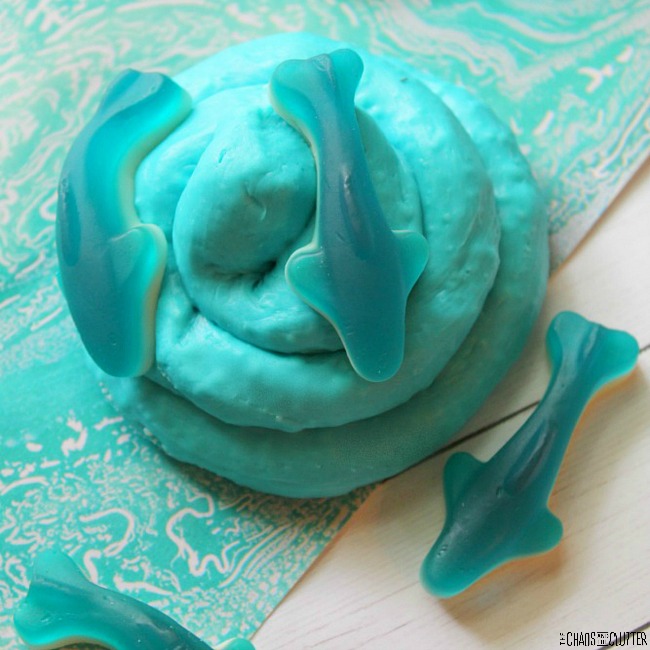
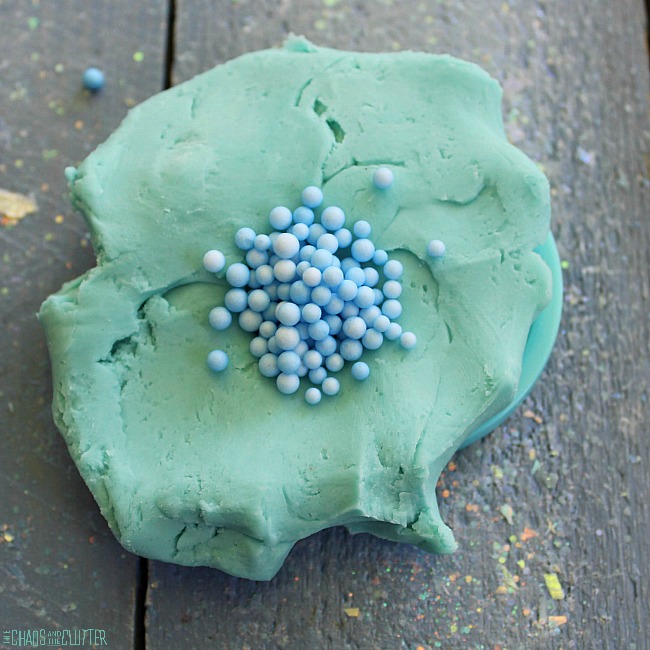

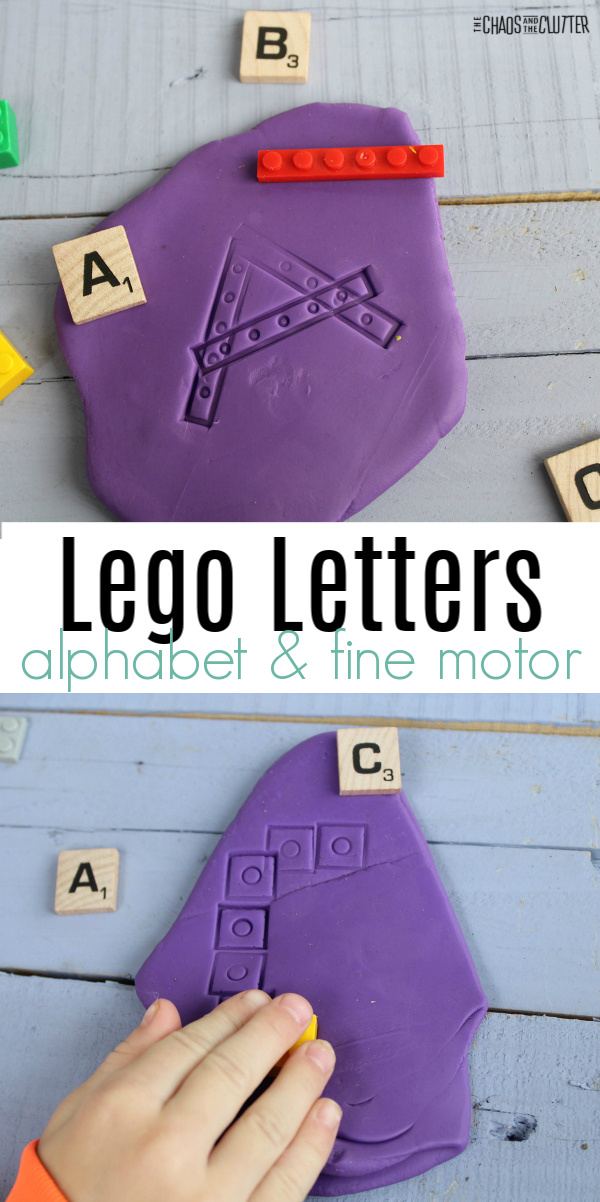
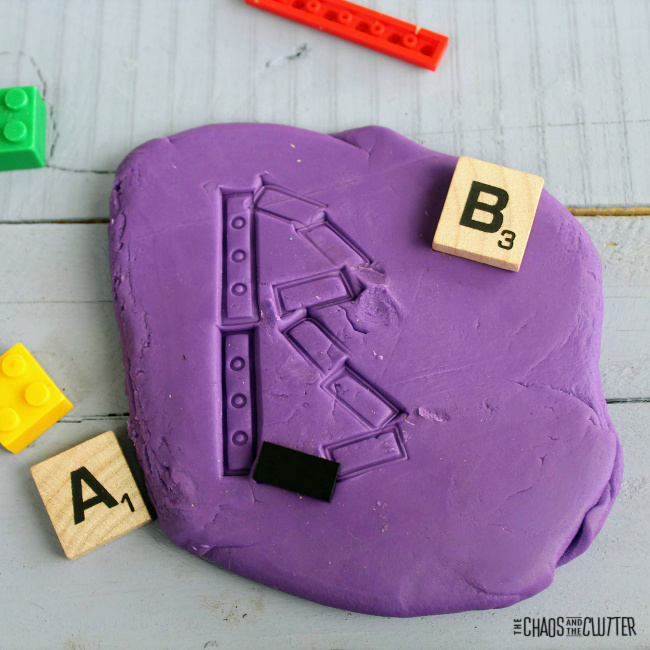 Directions:
Directions: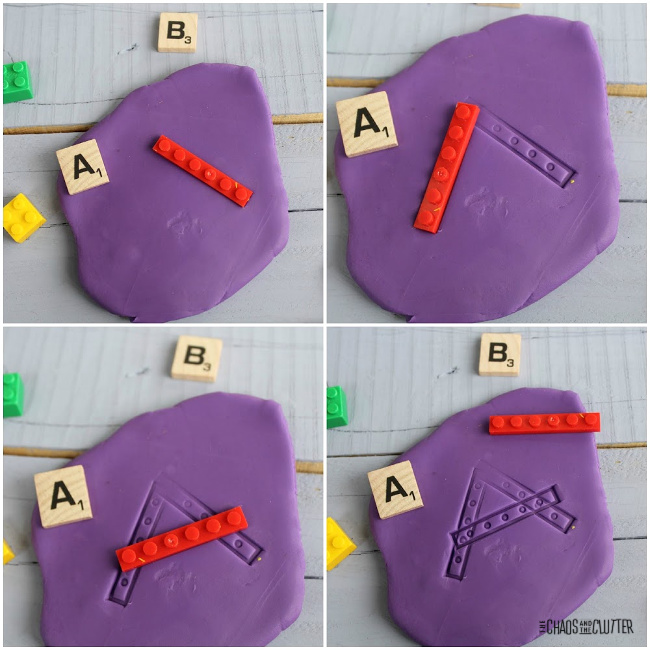 It can be helpful to start this activity with letters your child is most familiar with such as the letter their first name starts with.
It can be helpful to start this activity with letters your child is most familiar with such as the letter their first name starts with. 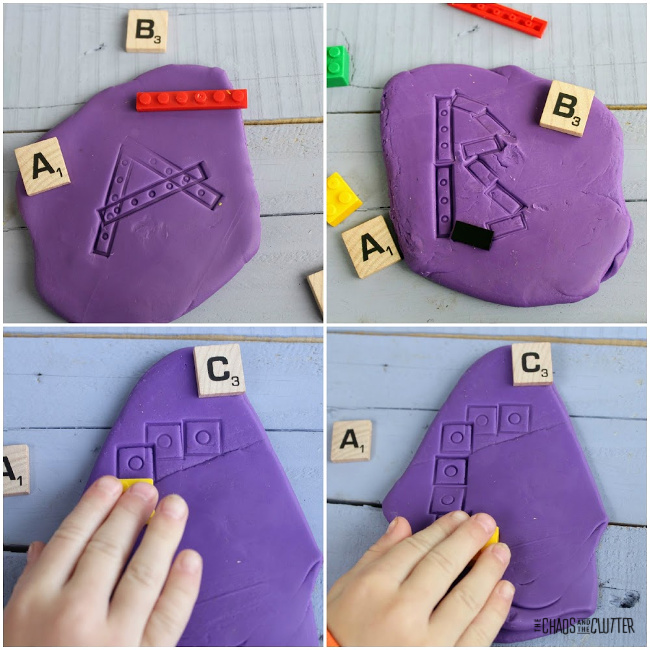 Be sure to allow your child to come up with their own way to stamp the letter in the playdough. As long as they get the basic shape of the letter, there is no “right” or “wrong” way to create it. It can be tempting to step in and show them and you may need to show them how to do one as an example, but once they get the idea, step back and allow them to create.
Be sure to allow your child to come up with their own way to stamp the letter in the playdough. As long as they get the basic shape of the letter, there is no “right” or “wrong” way to create it. It can be tempting to step in and show them and you may need to show them how to do one as an example, but once they get the idea, step back and allow them to create. 








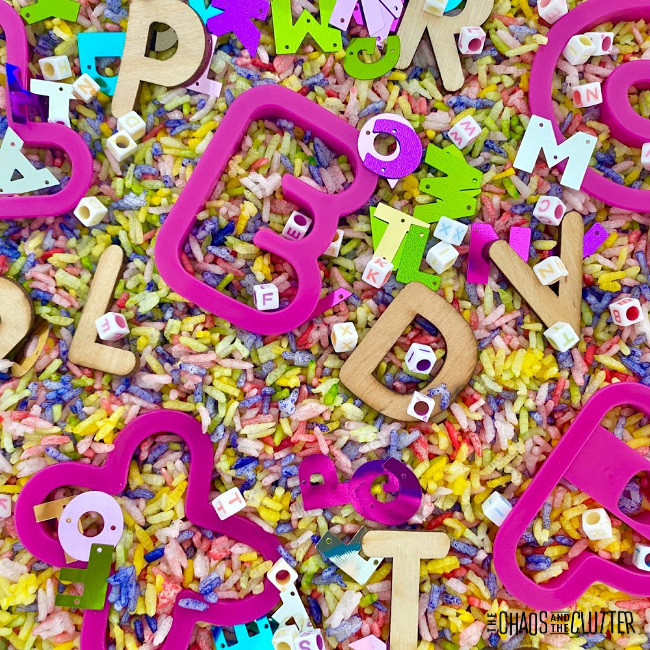
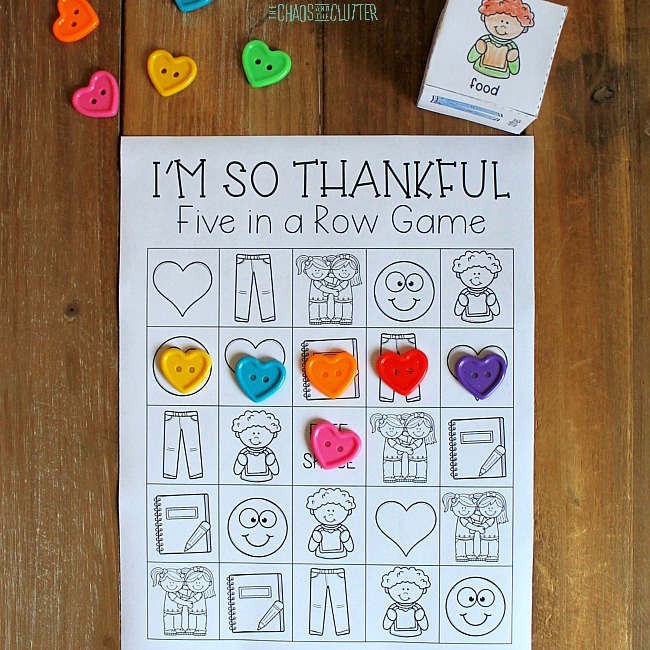
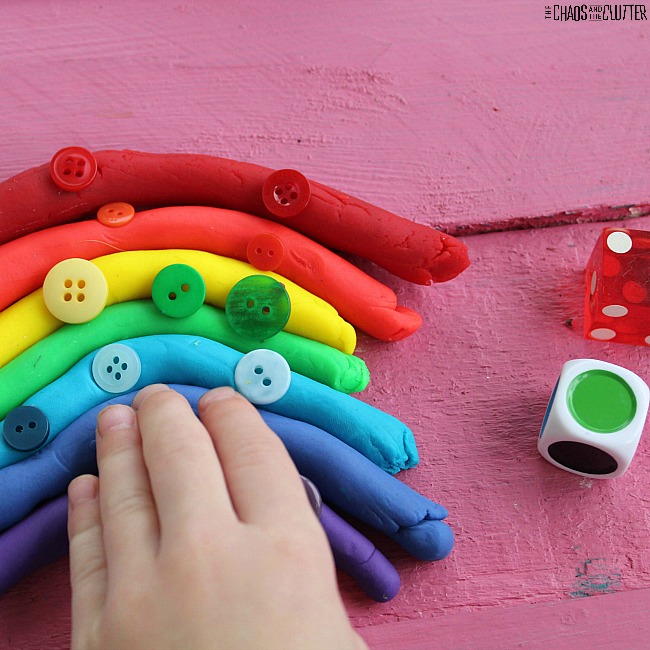
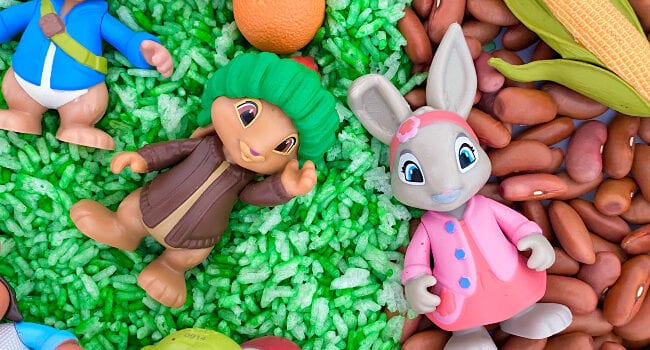
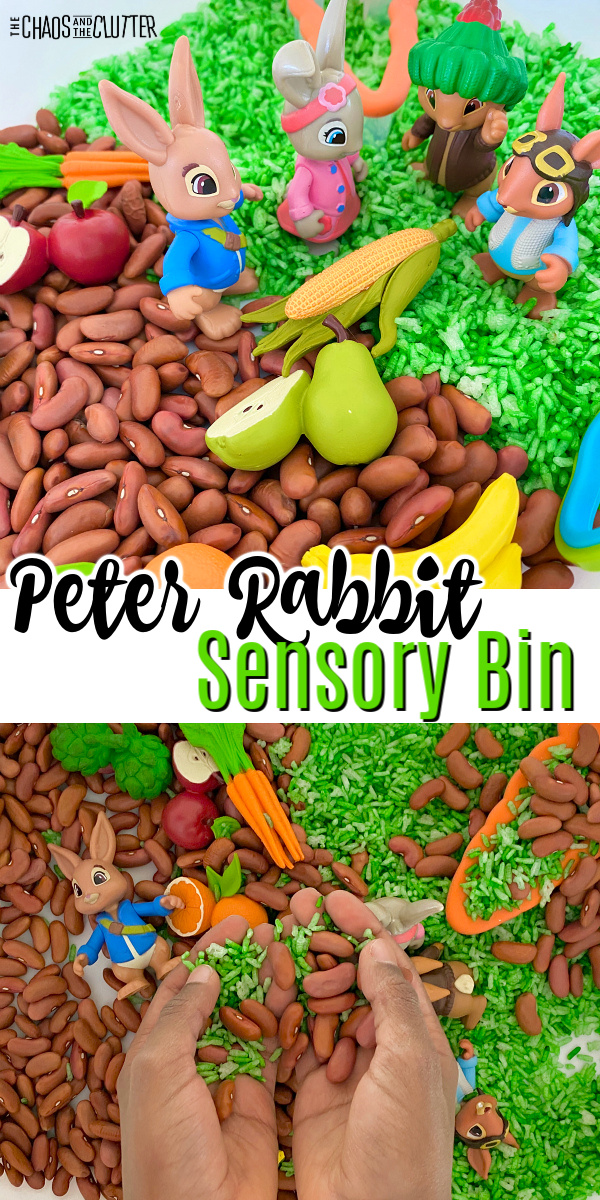 Preschoolers can engage in imaginative play with some of the most beloved characters in this adorable Peter Rabbit Sensory Bin. We later used some of these same items in our
Preschoolers can engage in imaginative play with some of the most beloved characters in this adorable Peter Rabbit Sensory Bin. We later used some of these same items in our 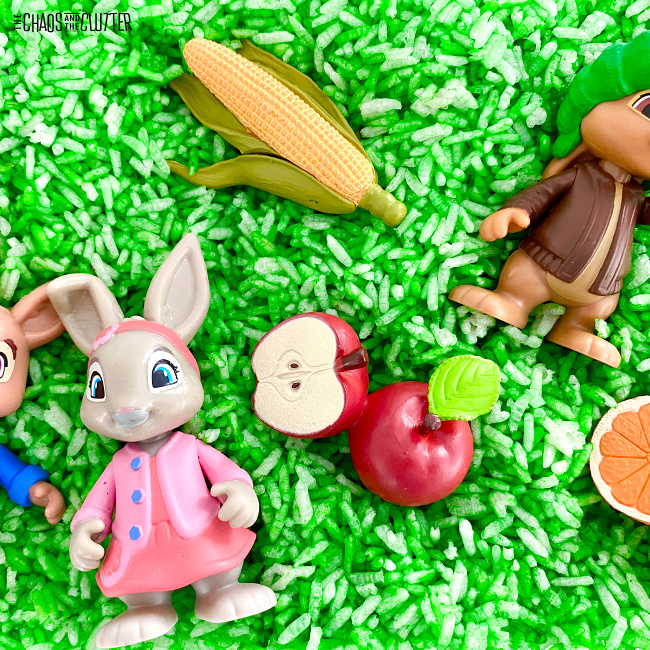 Directions:
Directions:






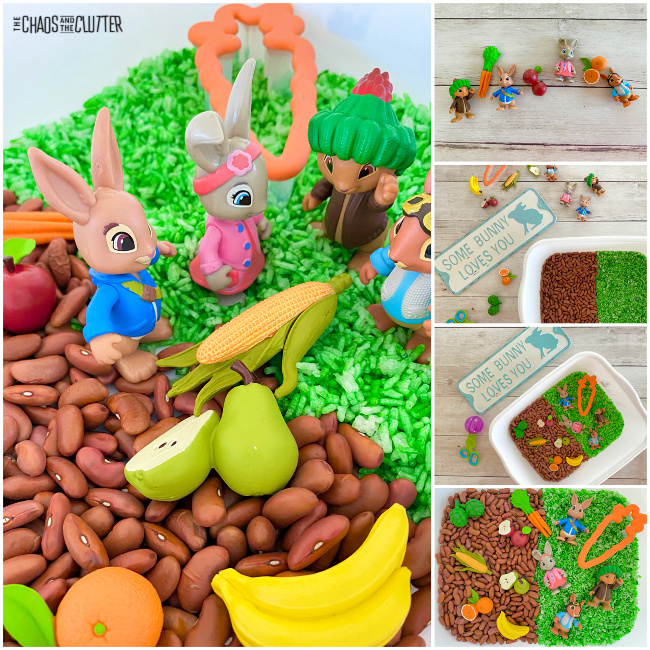
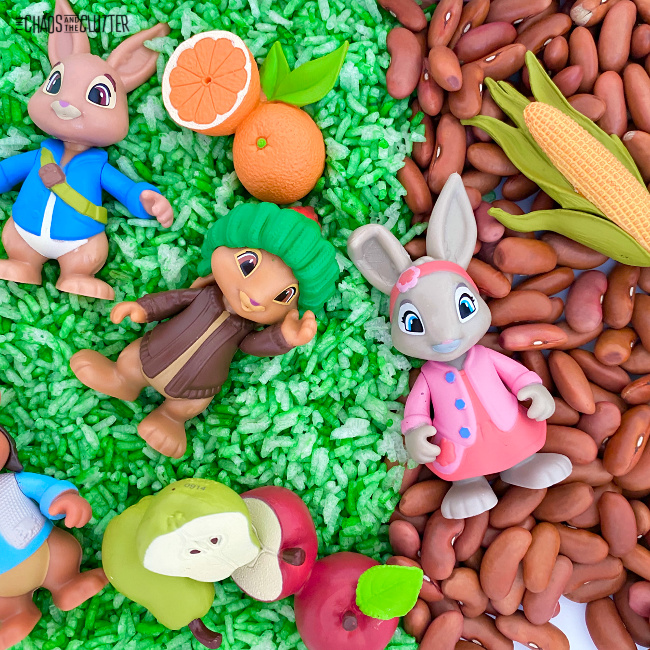
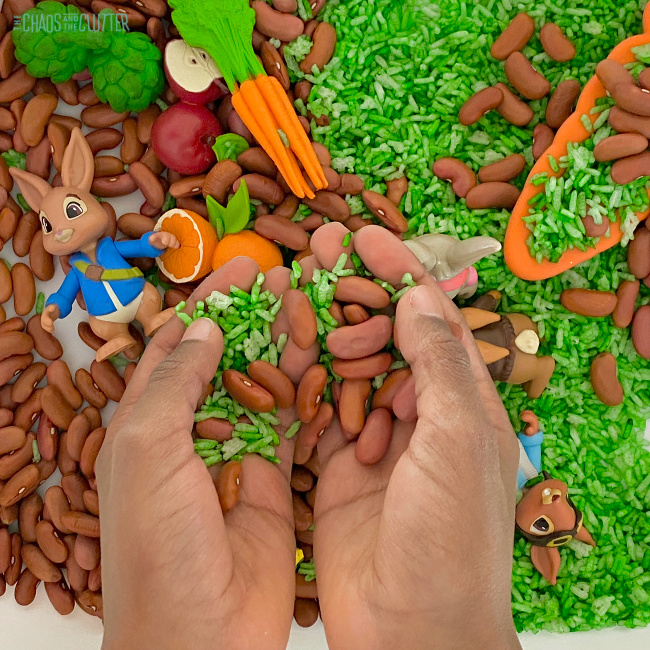
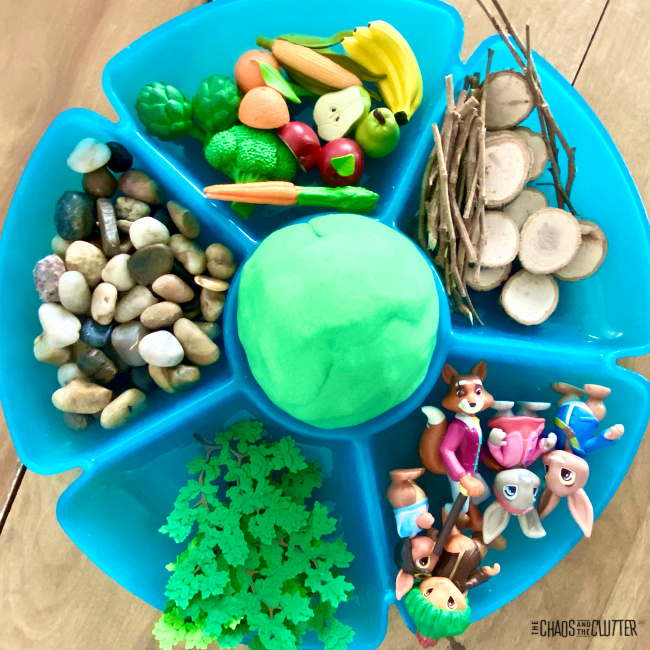

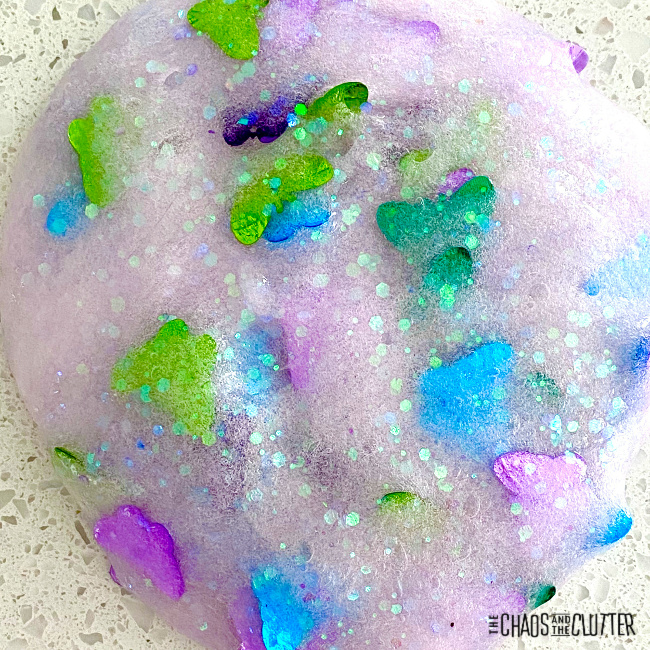
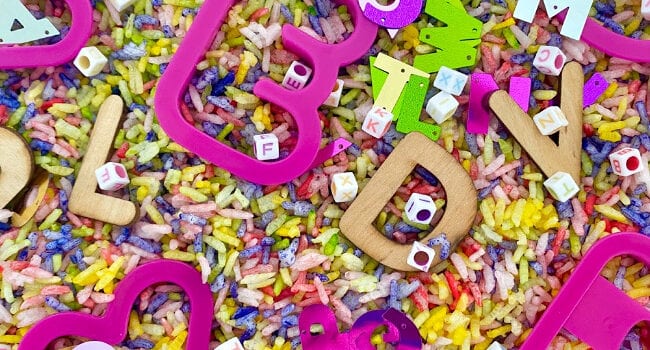
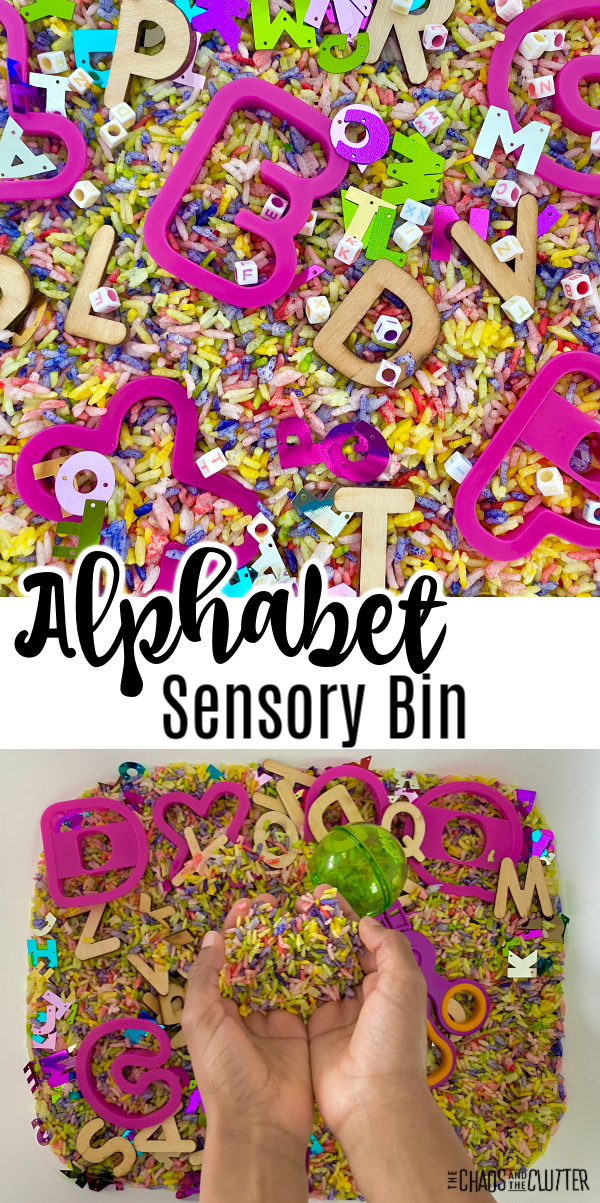
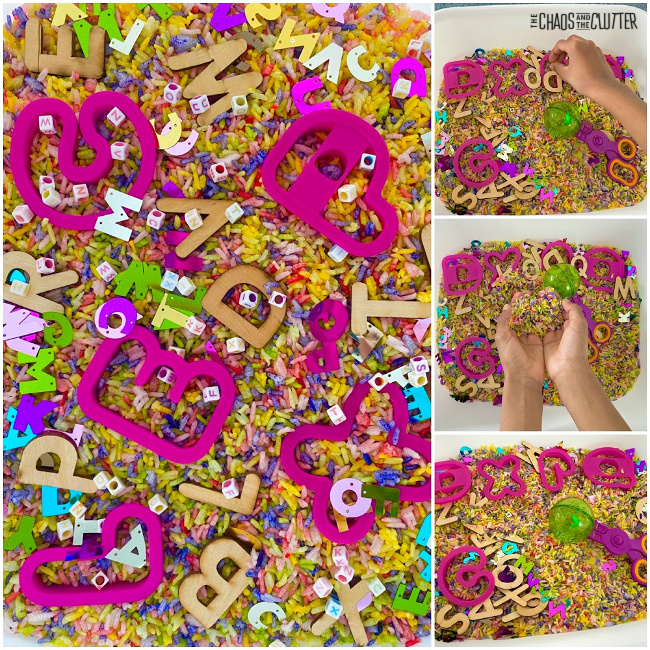 A note about adding multiple types of letters: if your child struggles with the alphabet, it can be best to only include one set of letters to reduce sensory overload and simplify things.
A note about adding multiple types of letters: if your child struggles with the alphabet, it can be best to only include one set of letters to reduce sensory overload and simplify things.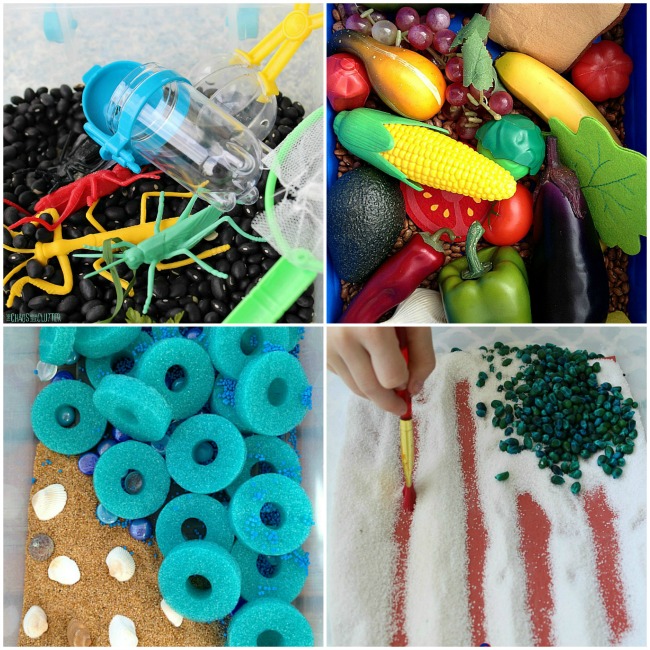
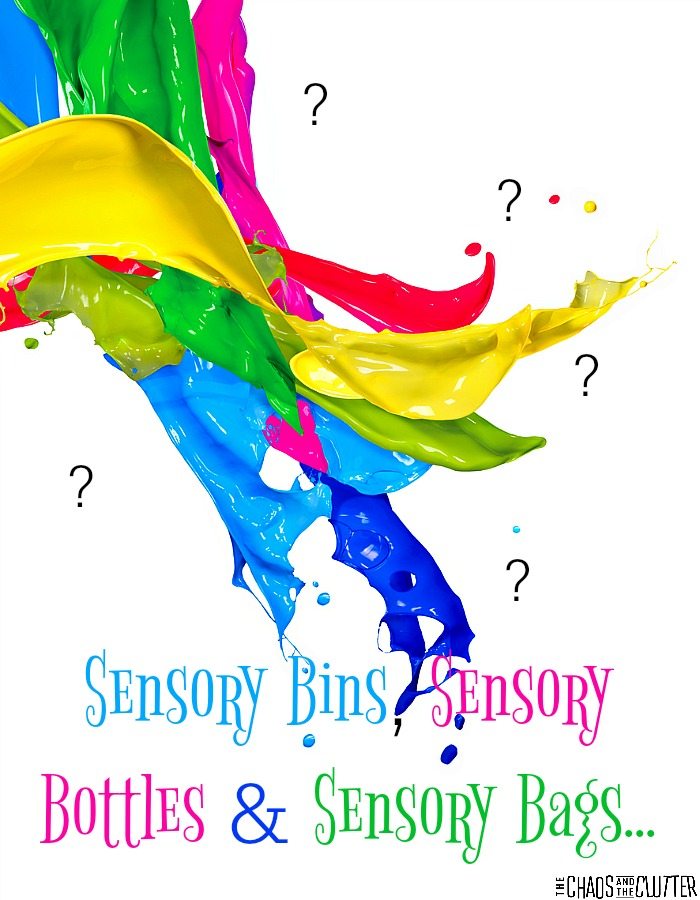
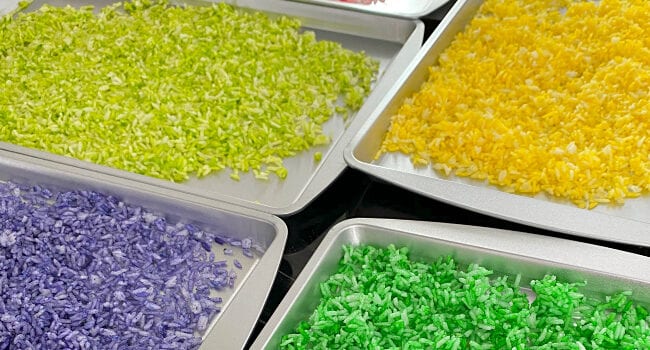
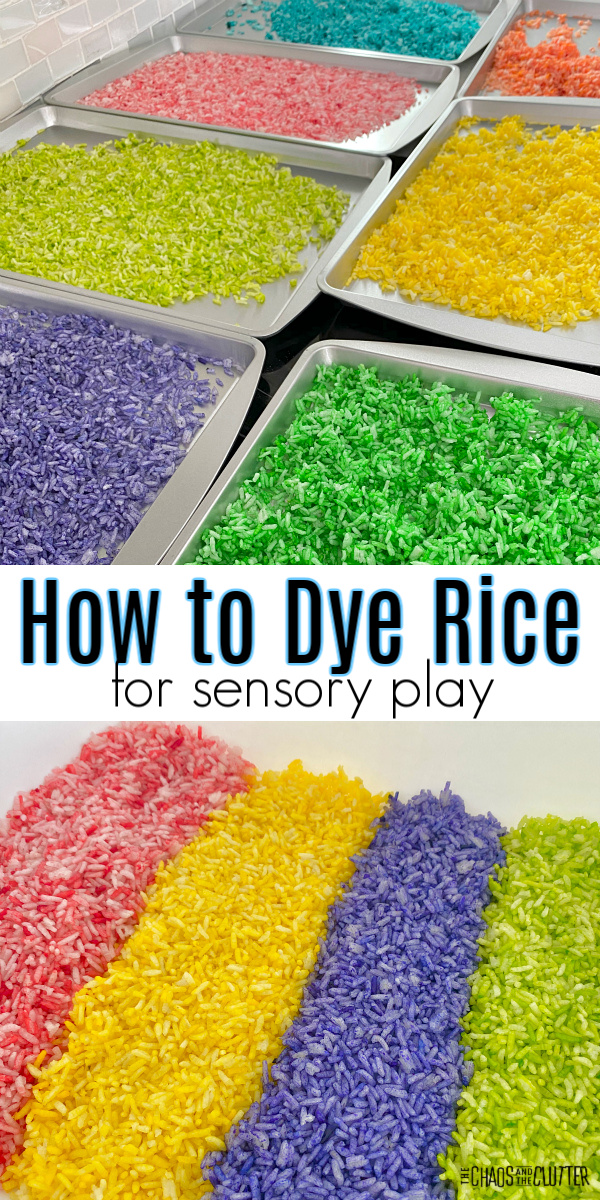 Rice is one of my favourite sensory bin fillers. I always make extra of the green because I find that it looks like grass which makes it versatile for all kinds of sensory bins, bottles, and bags.
Rice is one of my favourite sensory bin fillers. I always make extra of the green because I find that it looks like grass which makes it versatile for all kinds of sensory bins, bottles, and bags.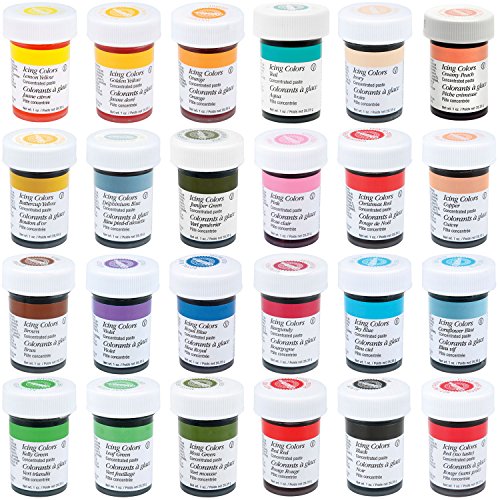


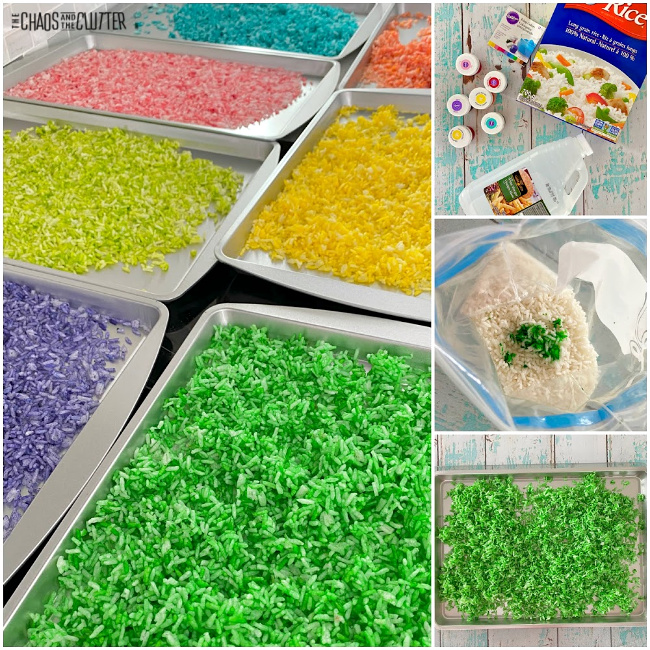 *A note about the essential oils:
*A note about the essential oils: 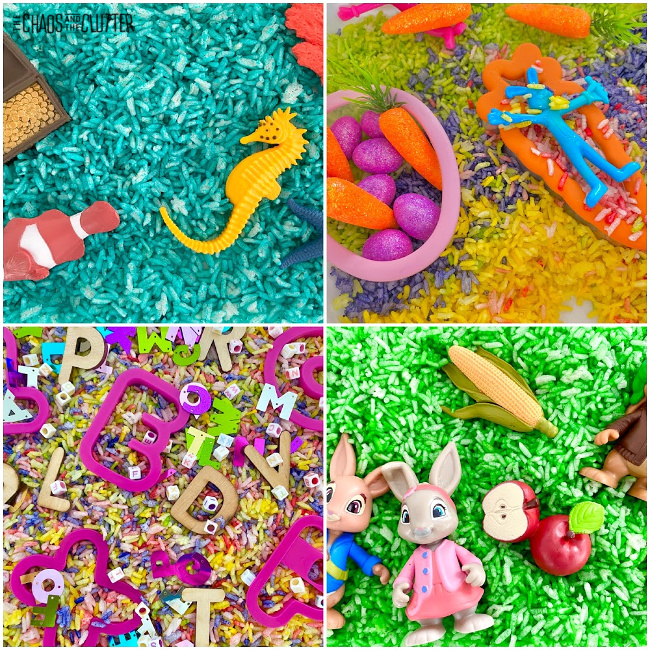 Other helpful information about sensory play:
Other helpful information about sensory play: